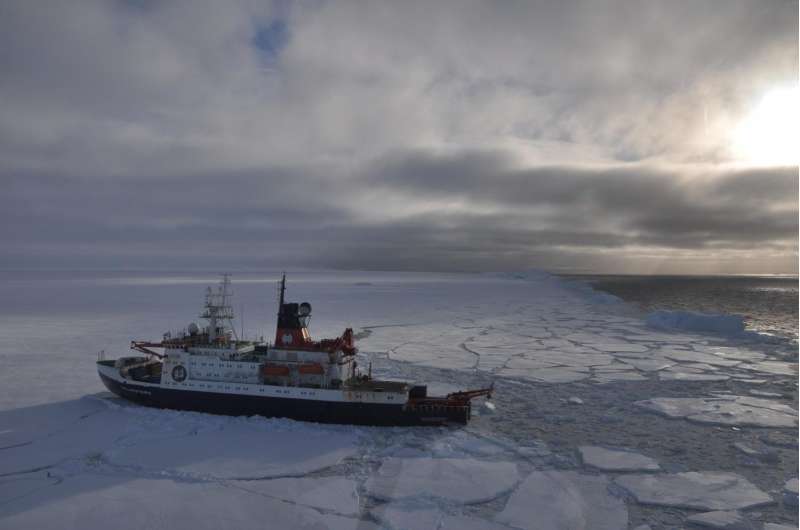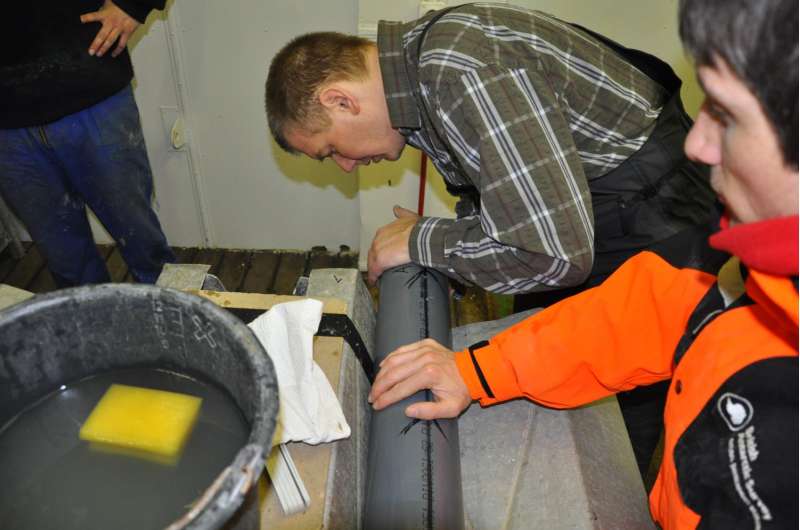New study shows West Antarctic Ice Sheet loss over the last 11,000 years

Reporting this week in the journal Nature, an international team of researchers led by British Antarctic Survey (BAS) explains that wind-driven incursions of warm water forced the retreat of glaciers in West Antarctica during the past 11,000 years. These new results enable researchers to better understand how environmental change may impact future sea-level rise from this climate-sensitive region.
By studying tiny shells in seafloor sediment cores retrieved from Pine Island Bay in West Antarctica, the team has reconstructed the interactions between the ice and ocean from 11,000 years ago until present. They describe the West Antarctic Ice Sheet (WAIS) as having experienced significant and sustained ice loss until 7,500 years ago, driven by warm water incursions. The influx of warm water then subsided for several thousands of years until it was reinvigorated in the 1940s, driving further retreat.
The WAIS is of great interest to researchers as two of its largest glaciers, Thwaites and Pine Island, are draining into the sea and contributing to sea-level rise. The big questions are why, and by how much, and what may happen in the future under climate change.
Lead author Dr Claus-Dieter Hillenbrand senior marine geologist at BAS says: "This ten-year study has yielded some exciting results. By understanding the mechanisms that caused the retreat of the WAIS over the past several thousand years, we can begin to build a clearer picture of what is happening today."
Data collected over the last 20 years have shown that the present ice loss in West Antarctica results from the relatively warm water from the deep ocean flowing on to the shallow continental shelf. This warm water reaches the coastline in places, where it triggers substantial melting of the floating parts of glaciers and leads to thinning of the ice upstream.
Dr Hillenbrand continues: "Our reconstruction shows that warm deep water flooded Pine Island Bay at the end of the last ice age. It forced the ice to retreat but stopped at about 7,500 years ago, when the belt of westerly winds driving the deep water onto the shelf shifted northwards.

"Ice loss from this part of West Antarctica is already making a significant contribution to sea-level rise - around 1 mm per decade, and is actually one of the largest uncertainties in global sea-level rise predictions. Whilst this is a small figure in actual terms, combined with the contribution from other melting glaciers around the world and expansion of the world's oceans, it will have an impact upon society through flooding of low-lying coastal regions".
"Understanding what happened in the distant past provides another important part of the jigsaw. Computer model simulations have suggested that ice-sheet melting through warm water incursions could initiate a collapse of the WAIS within the next few centuries, raising global sea-level by up to 3.5 metres."
The team investigated sediment cores collected from Pine Island Bay in the Amundsen Sea from the German research vessel RV Polarstern on two expeditions in 2006 and 2010. The team analysed the chemical composition of tiny shells built by organisms (foraminifera) that had lived in the water column and at the sea bottom before their shells became embedded in the seafloor sediments. This chemical composition acts as a 'fingerprint' of the water that the shells were formed in. By comparing these shells with those of modern shells bathed in warm deep water today the researchers were able to identify time intervals when warm deep water was either present or absent.
Co-author Dr James Smith, a marine geologist at BAS, says: "Our data also reveal a more recent history of the WAIS. A shift in the wind direction during the 1940s caused renewed upwelling of warm deep water on to the shelf. This has continued ever since and is responsible for the ice loss we are observing today and over the last few decades."
Co-author Dr Gerhard Kuhn, from the Alfred Wegener Institute in Germany, says: "Our results provide evidence that in the past WAIS retreat was also predominantly caused by melting through warm ocean water. This gives confidence in the predictions of the current generation of ice-sheet models which are used to forecast future ice loss from Antarctica and resulting sea-level rise."
Several of the team, including Smith, Hillenbrand and Kuhn, are now are working on a new project to provide estimates of ocean temperatures during this time interval.
Pine Island Glacier is one of the most inhospitable areas in Antarctica to investigate and researchers have only been exploring this area since the 1990s.
More information: West Antarctic Ice Sheet retreat driven by Holocene warm water incursions, Nature (2017). DOI: 10.1038/nature22995
Journal information: Nature
Provided by British Antarctic Survey


















